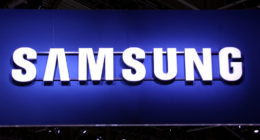We have many reasons to be optimistic about the future of gaming, indeed. By the end of 2024, the industry will likely reach a market size above USD 455 billion worldwide. The handsome projection results from an upward trend in the previous year, a trend that’s likely to remain until 2029. What does the future hold for us gamers, though? Keep reading to find out.
My Next Adventures
There’s always something new going on in this very dynamic industry. Considering emerging technologies’ impact, I can have a glimpse of future trends based on current successes. Here are some trends that I believe will shape this industry based on the impacts we already feel today.
New Players Against Steam
We’ll likely see new PC gaming platforms challenge Steam’s dominance in this segment. Currently, almost 50% of gaming developers put their games on Steam. Emerging PC-focused platforms will fight for a piece of the USD 12 billion PC gaming market. The number of online gaming platforms supporting crypto payments and crypto gambling will also rise. Check out the countries that allow crypto gambling and see if crypto gaming is allowed in your region.
Indie Games. Indie Games Everywhere.
If you want to know how popular an indie game can get, consider the roaring successes of Stardew Valley and Among Us. Indie games are widely distributed on platforms like Steam, but Roblox is preparing to enter the game. Roblox counts more than 200 million active users monthly and allows for creating and distributing new titles within the platform.
Mobile Gaming
According to the platform Statista, there will be nearly 2 billion mobile gamers worldwide by 2027. Likewise, competitive multiplayer mobile events, such as PUBG Mobile tournaments, are rising fast. Multiplayer games also provide more social interaction between players, and we’ll probably see more multiplayer mobile events in the future.
Competition Between Top-Notch Consoles
Despite online gaming platforms and cloud gaming, the good-ol’ consoles are likely to stay on the scene. Instead, they will fight to the death for this market. You already know the name, but I’ll cite them anyway: Playstation, Xbox, and Nintendo. Market projections assert this industry will sell over 63 million units by 2028. The battle between those companies involves their gaming catalogues and technological developments. For instance, my new PS5 came with a high-end SSD, improving its loading time.
New Realities
Do you remember Pokemon Go? It was just the beginning: we’ll soon see AR and VR technologies spread to other games. Games like Dota 2 and League of Legends will include AR/VR updates, ushering in a new era for MOBA games. I tried Warcraft with VR headsets, and it provides unparalleled immersion.
Metaverse
Metaverse gaming is gaining traction. According to Global Market Estimates, the industry will reach USD 710 billion by 2027. The metaverse also provides a deeply immersive gaming experience, allowing players to explore completely virtual worlds. Meta has also reduced the price of its VR headset, Meta Quest, in an attempt to bring in new users.
Artificial Intelligence
Generative AI technology is gaining space in the gaming world. Games using refined AI for realistic interactions between players and NPCs (non-playable characters) are already here. Future games are likely to rely even more on AI: some developers already use generative AI to create voices and facial expressions without human intervention.
Nostalgia
It doesn’t matter how far technology goes; remakes and reboots will always have a place in our minds and hearts. Franchises like Final Fantasy and Resident Evil have scores of loyal fans, including myself, ready to revive the easy afternoon of our childhood. They won’t mind playing the same game repeatedly as long as there’s a new twist to it.
Unlocking New Levels
The gaming industry has already demonstrated how quickly it can adapt to emerging technologies. In this industry, new technologies can include new gadgets, hardware upgrades, faster internet connections, or better mobile devices.




